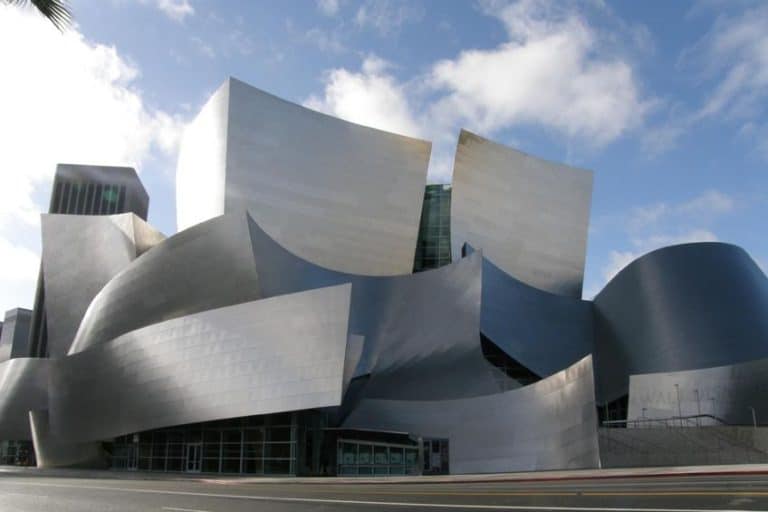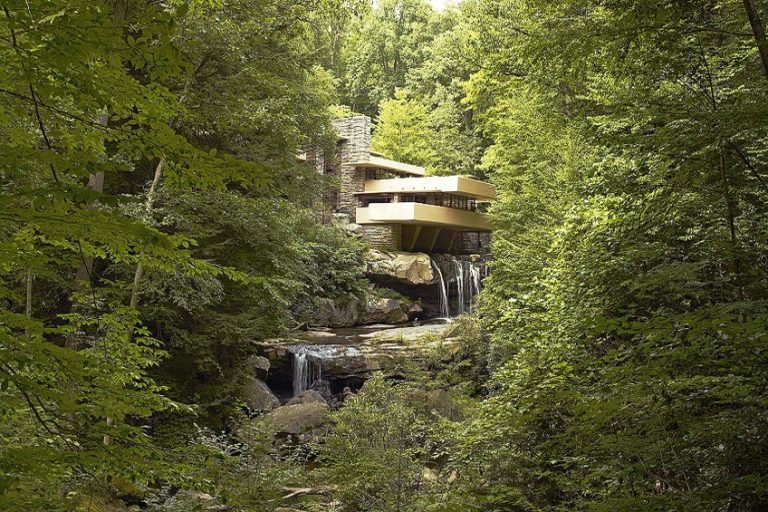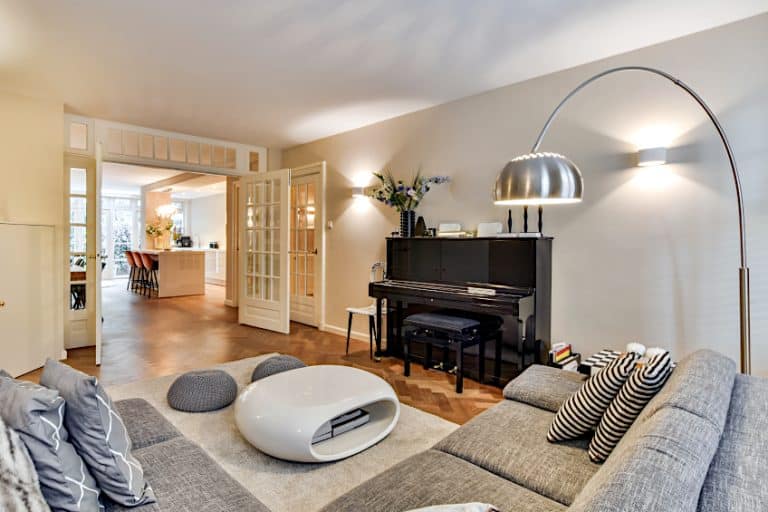Coit Tower San Francisco – What Is the Coit Tower?
If you have never heard of this structure before, you may be wondering, “what is the Coit Tower?”. In the Telegraph Hill area of San Francisco, California, stands the 64-meter-tall Coit Tower, which provides sweeping panoramas of the city and the ocean. In order to enhance the beauty of San Francisco, Lillie Hitchcock Coit’s donation to the city was used to construct the tower in Pioneer Park between 1932 and 1933. The interior includes 25 frescos produced onsite by various artists, as well as two extra works that were added after being produced elsewhere.
The Coit Tower’s History
| Architect | Arthur Brown Jr. (1874 – 1957) |
| Date Completed | 1933 |
| Materials | Reinforced concrete |
| Function | Monument |
| Location | Telegraph Hill, San Francisco, United States |
Arthur Brown, Jr. designed the Art Deco structure, which is made of unpainted reinforced concrete. It was erected in dedication to the volunteer firemen who perished in San Francisco’s five catastrophic fires and is also referred to as the Coit Memorial Tower. Above the tower’s main entrance is a relief of a phoenix made of concrete by artist Robert Boardman Howard. The architect commissioned the piece and had it cast as a part of the structure. Telegraph Hill has been praised as offering the best 360-degree view of San Francisco Bay. It was the location of a two-floor observation platform in 1849, from which data about approaching ships were transmitted to city inhabitants through an optical semaphore device, which was succeeded in 1853 by an electrical telegraph, which would later be destroyed by a storm in 1870.
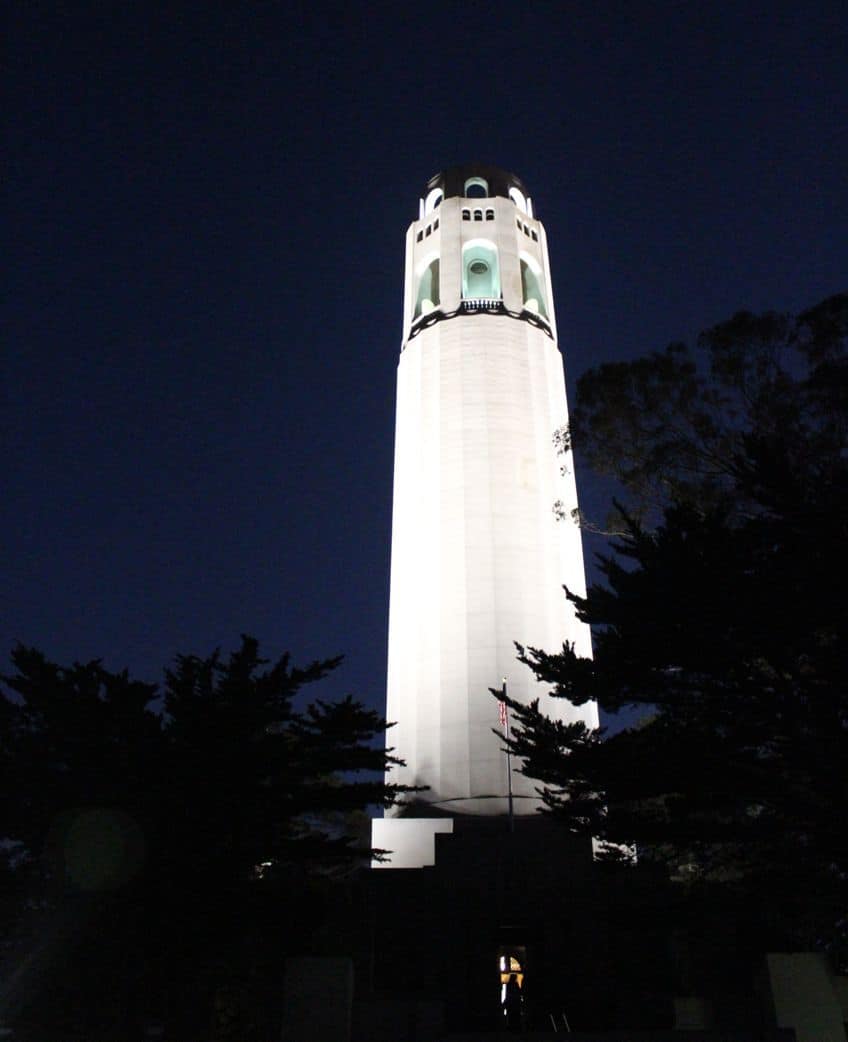
Coit Tower was built using funds gifted by Lillie Hitchcock Coit, a rich aristocrat who enjoyed chasing fires in the city’s early days. There was no city fire service prior to December 1866, and incidents in the city, which broke out on a regular basis in the wooden structures, were fought by many volunteer fire companies. Lillie Hitchcock Coit was one of the more unusual figures in North Beach, smoking cigars and wearing pants decades before it was culturally acceptable for women to do so. She was an enthusiastic gambler who frequently dressed as a man to bet in the male-only clubs that line North Beach.
The Coit Tower in San Francisco was funded by Coit’s inheritance four years after her death in 1929. She developed a unique bond with the city’s firemen. She saw them respond to a fire call up on the hill while they were short handed; she tossed her school books aside and jumped in to help, shouting out to other people to help get the equipment up the hill to the flames. Coit became the firefighters’ mascot after that, and her parents had to restrain her from leaping into duty at the ring of every fire bell. She usually accompanied the firefighters during street parades and festivities.
Coit was honored as an honorary fireman throughout her childhood and adulthood. In her will, she directed that one-third of her estate, $118,000, “be used in an acceptable manner for the objective of contributing to the beauty of the place which I have always cherished”.
In her honor, two monuments have been created. The first was Coit Tower, and the second was a statue of three firemen, one of them was holding a woman in his arms. The San Francisco County Board of Supervisors recommended using Coit’s gift to build a road near Lake Merced. This idea received criticism from the estate’s trustees, who indicated a wish that the county finds ways and methods of expenditure of the funds on a monument that in itself would be an institution and not a piece of public development.
The estate executors agreed to a monument on Telegraph Hill proposed by Art Commission President Herbert Fleishhacker. A further $7,000 in city funding had been authorized, and a design competition had been launched. The winning design was by architect Arthur Brown, Jr., and it was finished and dedicated on the 8th of October, 1933. Following the removal of numerous other contentious monuments during the George Floyd demonstrations that started in May 2020, the San Francisco Arts Commission instructed the relocation of the statue of Christopher Columbus which had stood outside the entrance to the building of the tower since 1957 and was removed on the 18th of June, 2020.
The Architecture of the Coit Tower
The Coit Tower in San Francisco, which offers stunning views of the city and is renowned for its distinctive construction, is visible from most locations across the metropolis. Inside the tower, Brown’s competition design called for a restaurant; however, an exhibition space was instead added to the final design. The structure consists of three nested concrete cylinders, the outermost of which supports the observation platform with a 55-meter shaft with tapering flutes. The elevator is housed in an inner shaft, while a middle shaft has stairs in it.
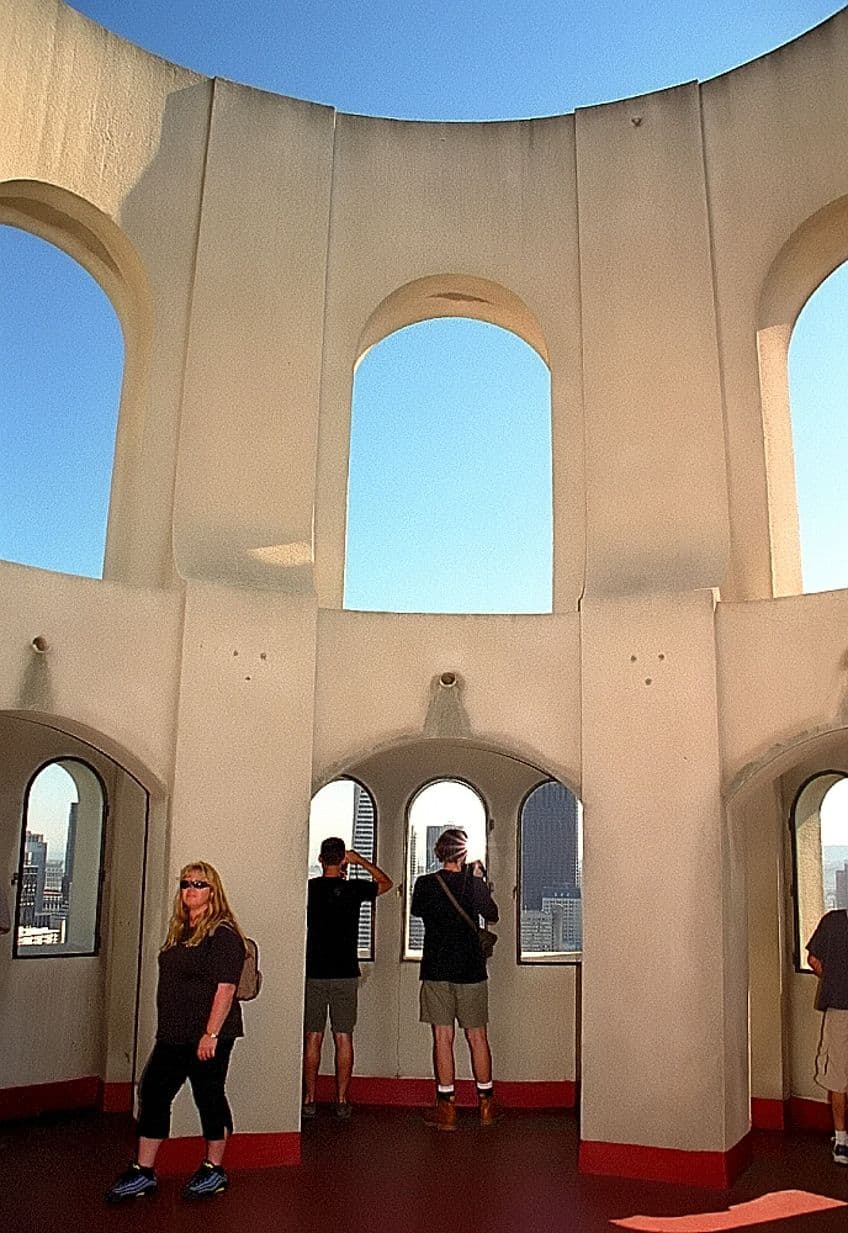
A skylight and arcade are located above the observation deck, which is just short of 10 meters below the peak. At the base, a rotunda includes a gift shop and display areas. Gravity is utilized to supply all systems in the tower, and potable water is piped from a water main at ground level to two 3,800-liter tanks on the fifth floor. A booster pump was later placed at the tanks to give enough pressure for the bathrooms. Due to this configuration, the paintings are susceptible to system leaks that might be prevented if sufficient pressure from the water supply at the street was supplied.
The Coit Tower Murals
The American Social Realism-inspired Coit Tower murals served as the Public Works of Art Project’s pilot project, the first of the New Deal’s federal employment initiatives for artists. Victor Arnautoff, Maxine Albro, Lucien Labaudt, Jane Berlandina, Ralph Chessé, Ray Boynton, Rinaldo Cuneo, Parker Hall, Ben F. Cunningham, Edith Hamlin, Gordon Langdon, John Langley Howard, and Clifford Wight were among the muralists under the supervision of Bernard Zakheim and Ralph Stackpole when they successfully applied for the commission in 1933. Many of them were members of the California School of Fine Arts students and faculty. Each of these painters received a weekly payment of $25 to $45 to represent aspects of Californian life.
Less well-known painters were restricted to 3 by 1 meter areas, while the more famous ones were given sections that measured 3 by 11 meters.
Artwork Themes
The artworks vividly convey the artists’ varied levels of commitment to racial equality as well as to Marxist and leftist political ideologies. John Langley Howard, a fellow artist, is portrayed in Bernard Zakheim’s mural clutching a newspaper in his left hand and reaching with his right for a shelf-bound edition of Karl Marx’s Das Kapital. Workers of all colors are portrayed as equals, frequently in socialist realism’s heroic attitudes, as well-dressed white individuals of the capitalist classes take pleasure in the rewards of their labor. The artwork by John Langley Howard portrays an ethnically varied Labor March as well as an impoverished family searching for gold as an affluent, greatly exaggerated ensemble looks on.

George Albert Harris, the youngest of the muralists, created a painting in which the world of finance is portrayed by the Federal Reserve Bank and a stock market ticker with dropping equities, while Law is symbolized as a law library. Some of the book titles in the legal library are authentic, while others jokingly or derogatorily designate fellow muralists as writers. The majority of the murals are free to view during open hours, while the Recreation and Parks Department of San Francisco is negotiating to charge tourists a fee to access the mural rotunda. The artworks in the spiral stairwell and second level, which are ordinarily closed to the general public, are now accessible through tours. Coit Tower is featured in many guided bus excursions of the city when you visit. From the point of view where Coit Tower is located, you can step off the bus and look out at several panoramic landscapes.
Censorship of the Coit Tower Murals
The West Coast waterfront strike in 1934, which was taking place close at the foot of Telegraph Hill, spurred government authorities, shipping corporations, certain union leaders, and the press to voice concerns about the potential communist activity. This “red scare” was characterized as playing a “critical role” in the following dispute, which centered on two of the murals: Steelworker and Surveyor by Clifford Wright. These portraits were initially joined by a third little fresco in which Clifford Wight depicted the New Deal, capitalism, and communism, the three major economic systems of the time, with the communism section featuring a sickle and hammer.
Herbert Fleishhacker, a conservative banker who was the most influential committee member allocating funds from the Public Works of Art Project, requested Heil to examine the artworks on the 23rd of June, 1934.
Heil responded via telegraph that some painters had incorporated “features as well as certain icons which might be perceived as communist propaganda”, and that “editorial staff of popular and respected publications has alerted us that they would take a negative stance towards the entire project unless those features are removed”. The tower’s scheduled 7th of July formal opening was postponed, and Fleishhacker was given the order to shut the tower and cover the windows’ view from the outside.
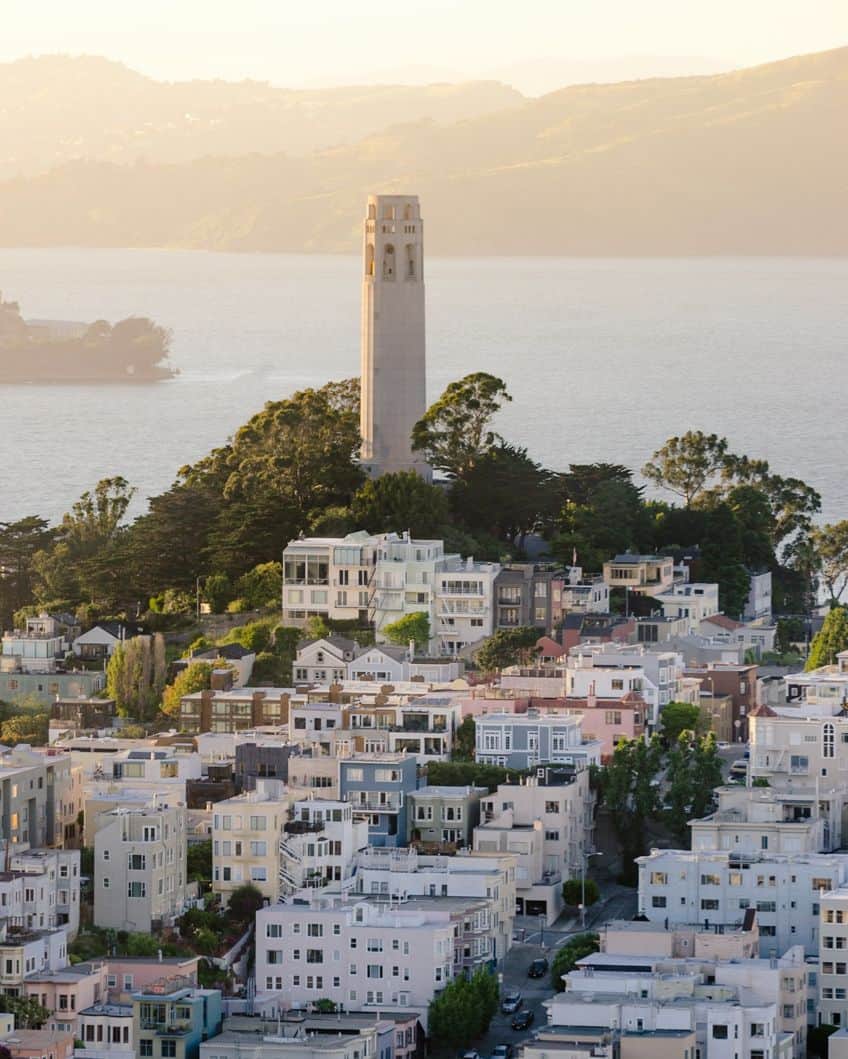
Later, publications in the San Francisco Examiner and San Francisco Chronicle criticized the project while Wight insisted on keeping the sickle and hammer emblem on his mural. These stories occasionally featured inaccurate depictions of these murals. Nevertheless, federal government officials determined that the problematic sections would have to be repainted, and 16 of the painters signed a statement opposing the communist emblem, claiming it had no home in the subject matter presented. The sickle and hammer and the banner were eventually removed, and Coit Tower reopened on the 12th of October, 1934.
Coit Tower was erected in 1933 as a memorial to San Francisco’s volunteer firemen. The tower was completely funded by Lillie Hitchcock Coit, a rich socialite who admired the city’s volunteer firemen and wanted to construct a permanent homage to them. Arthur Brown Jr. was the architect of the tower, which was initially meant to serve as an observation deck and a location for art exhibitions. Coit Tower is now open to the general public, and tourists may ride an elevator to the top to appreciate the panoramic views of the city and its outskirts. A tiny museum at the tower’s base exhibits historical objects and photographs linked to the Coit Tower’s history.
Frequently Asked Questions
What Is the Coit Tower in San Francisco Used For?
Originally, this famous tower was going to be used as an observational platform. It was also going to house a restaurant, but that later changed to a space to exhibit various artworks. Today, it is used to house 25 murals that are all dedicated to life in San Francisco.
Why Was the Coit Tower in San Francisco Built?
Lillie Hitchcock Coit was a rich San Franciscan philanthropist and socialite. She was well-known for her passion for firefighting from a very young age, as well as her unique personality. She bequeathed a large chunk of her assets to San Francisco to be utilized to build a monument to the firefighters and beautify the city. As a result of this donation, the Coit Tower was erected.
Why Did Some People Have an Issue With the Coit Tower Murals?
Some of the paintings in Coit Tower drew criticism because they were perceived as promoting communist and socialist ideals. During the Great Depression, the artworks were produced as part of a government-funded initiative known as the Public Works of Art Project. Some of the murals feature workers and labor organizations. This sparked significant debate at the time, with charges that the paintings were spreading communist propaganda. The most contentious element of the murals was the inclusion of the hammer and sickle emblem that is commonly associated with the communist movement and ideals. There were many threats regarding the symbolism, and even many of the other artists involved felt that there was no room for that kind of symbolism in artworks that were meant to represent the United States and all it stands for.
Justin van Huyssteen is a freelance writer, novelist, and academic originally from Cape Town, South Africa. At present, he has a bachelor’s degree in English and literary theory and an honor’s degree in literary theory. He is currently working towards his master’s degree in literary theory with a focus on animal studies, critical theory, and semiotics within literature. As a novelist and freelancer, he often writes under the pen name L.C. Lupus.
Justin’s preferred literary movements include modern and postmodern literature with literary fiction and genre fiction like sci-fi, post-apocalyptic, and horror being of particular interest. His academia extends to his interest in prose and narratology. He enjoys analyzing a variety of mediums through a literary lens, such as graphic novels, film, and video games.
Justin is working for artincontext.org as an author and content writer since 2022. He is responsible for all blog posts about architecture, literature and poetry.
Learn more about Justin van Huyssteen and the Art in Context Team.
Cite this Article
Justin, van Huyssteen, “Coit Tower San Francisco – What Is the Coit Tower?.” Art in Context. June 7, 2023. URL: https://artincontext.org/coit-tower-san-francisco/
van Huyssteen, J. (2023, 7 June). Coit Tower San Francisco – What Is the Coit Tower?. Art in Context. https://artincontext.org/coit-tower-san-francisco/
van Huyssteen, Justin. “Coit Tower San Francisco – What Is the Coit Tower?.” Art in Context, June 7, 2023. https://artincontext.org/coit-tower-san-francisco/.




